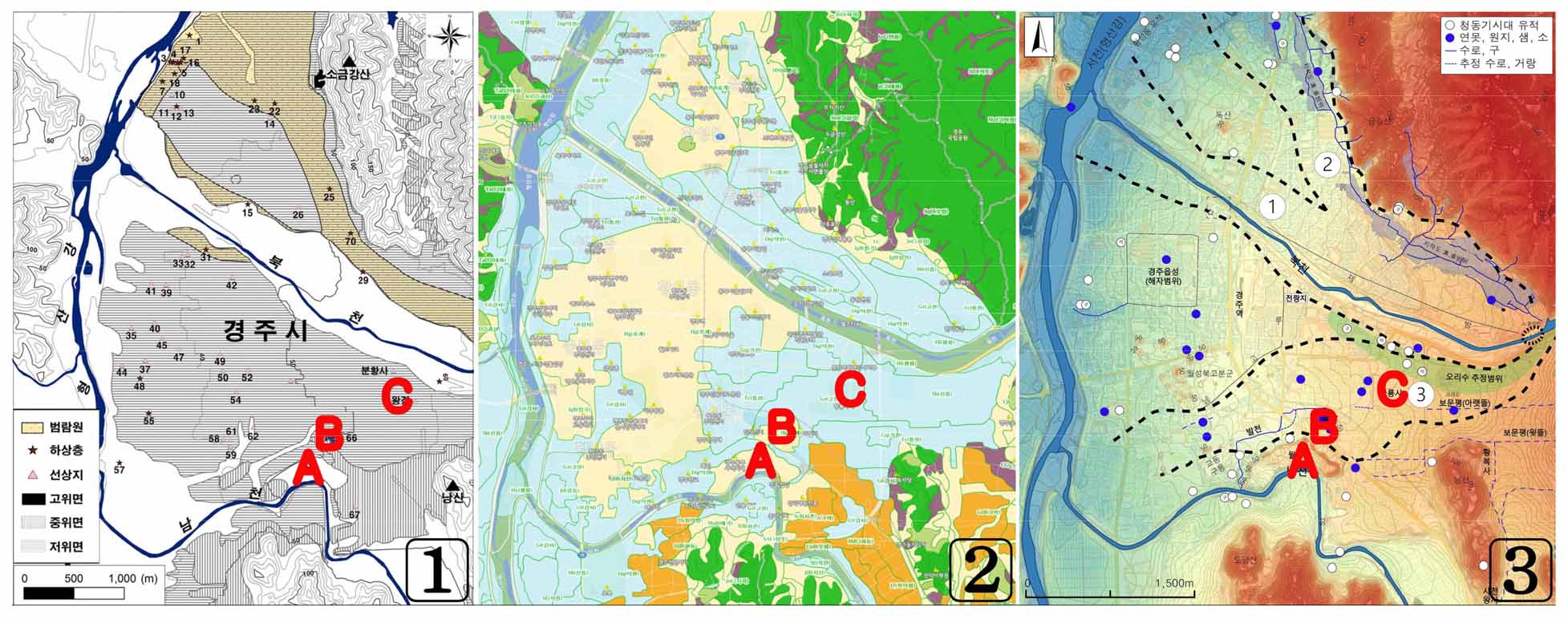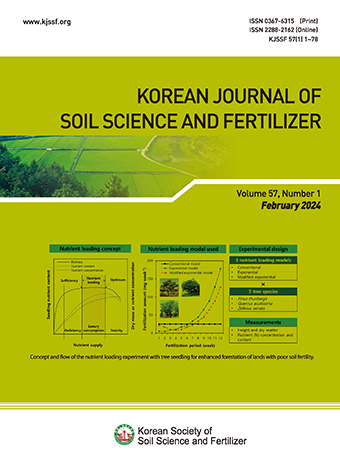Original research article
Abstract
References
Information
Jungwon National Research Institute of Cultural Heritage. 2019. Report on paleo morphology analysis in the area around the Chilcheung Seoktop stone pagoda in Tappyeong-ri, Chungju. Report of Excavation Investigation of Site in the Vicinity of Chilcheung Seoktop Stone Pagoda in Tappyeong-ri, Chungju (Korean Institute for Archaeology & Environment). Report No. 20.
- Publisher :Korean Society of Soil Science and Fertilizer
- Publisher(Ko) :한국토양비료학회
- Journal Title :Korean Journal of Soil Science and Fertilizer
- Journal Title(Ko) :한국토양비료학회 학회지
- Volume : 54
- No :2
- Pages :222-236
- Received Date : 2021-05-03
- Revised Date : 2021-05-21
- Accepted Date : 2021-05-21
- DOI :https://doi.org/10.7745/KJSSF.2021.54.2.222




 : Hwang and Yoon (2013),
: Hwang and Yoon (2013),  : National Academy of Agricultural Sciences (2014),
: National Academy of Agricultural Sciences (2014),  : Chang (2020).
: Chang (2020). Korean Journal of Soil Science and Fertilizer
Korean Journal of Soil Science and Fertilizer








